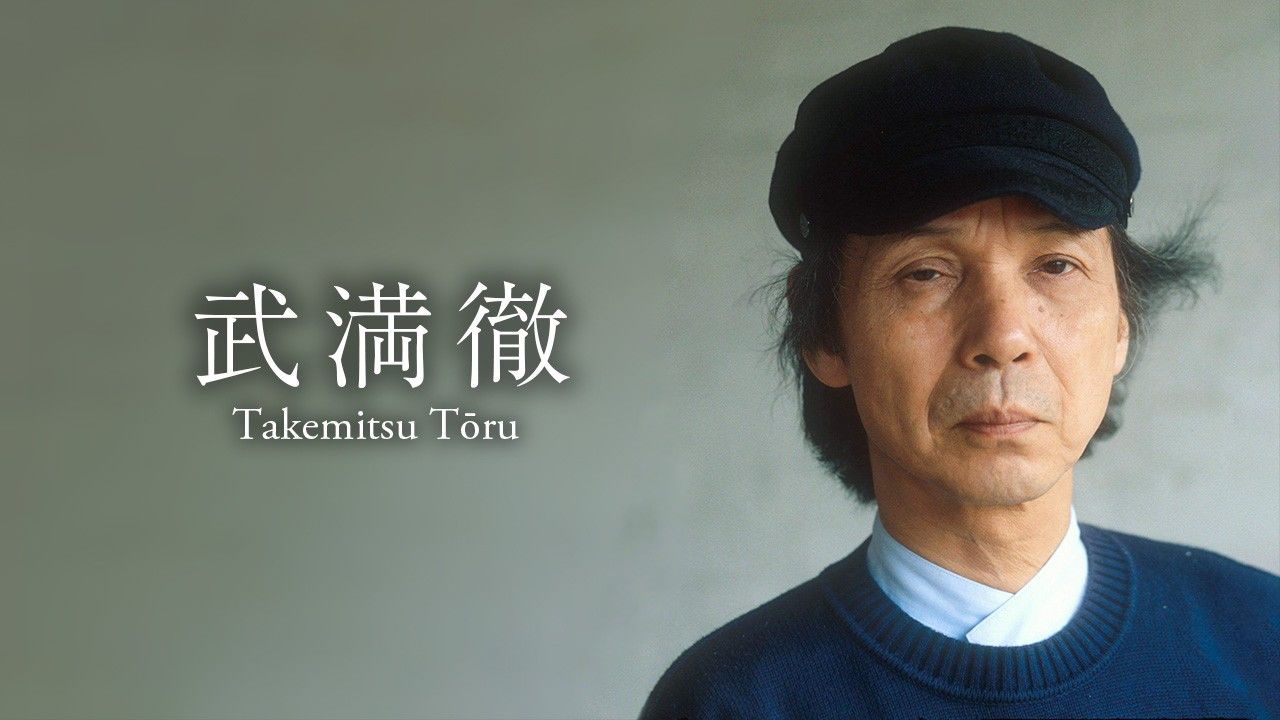
Takemitsu Tōru: New Possibilities for Modern Music in the Sounds of Nature
People Music- English
- 日本語
- 简体字
- 繁體字
- Français
- Español
- العربية
- Русский
In 1966, the New York Philharmonic commissioned new music from 18 contemporary composers as part of celebrations to mark its 125th anniversary. The commission led to at least one masterpiece that is still discussed and performed today: Takemitsu Tōru’s November Steps, for biwa, shakuhachi, and orchestra.
The first time I heard this piece, I was lost for words, astonished by its nobility of spirit and powerfully beautiful evocation of a psychological landscape. Leonard Bernstein, who attended the premiere, where Takemitsu’s piece was conducted by Ozawa Seiji, apparently had a similar reaction, remarking on the remarkable strength and “humanity” of the music.
November Steps opens with a delicate single note on a harp, like a droplet splashing onto a still surface of water. The orchestra adds textures, the sound sweeping gently from left to right like the soughing of a breeze through a forest. The Western orchestra and the traditional Japanese instruments (the lutelike biwa and a shakuhachi flute) take turns to dominate the music, highlighting the differences between them. Only for brief moments do the alternating strands of East and West touch. The piece ends with spirited passage on the shakuhachi, and a profound silence follows.
It was a groundbreaking piece that brought together traditional Japanese instruments and the Western avant-garde. Despite its uncompromising ambition, the piece was a resounding success, and subsequent performances were rapturously received in Germany, the Netherlands, and other countries. November Steps established Takemitsu Tōru as one of the world’s most in-demand composers, prompting a stream of international commissions that would continue for the rest of his life.
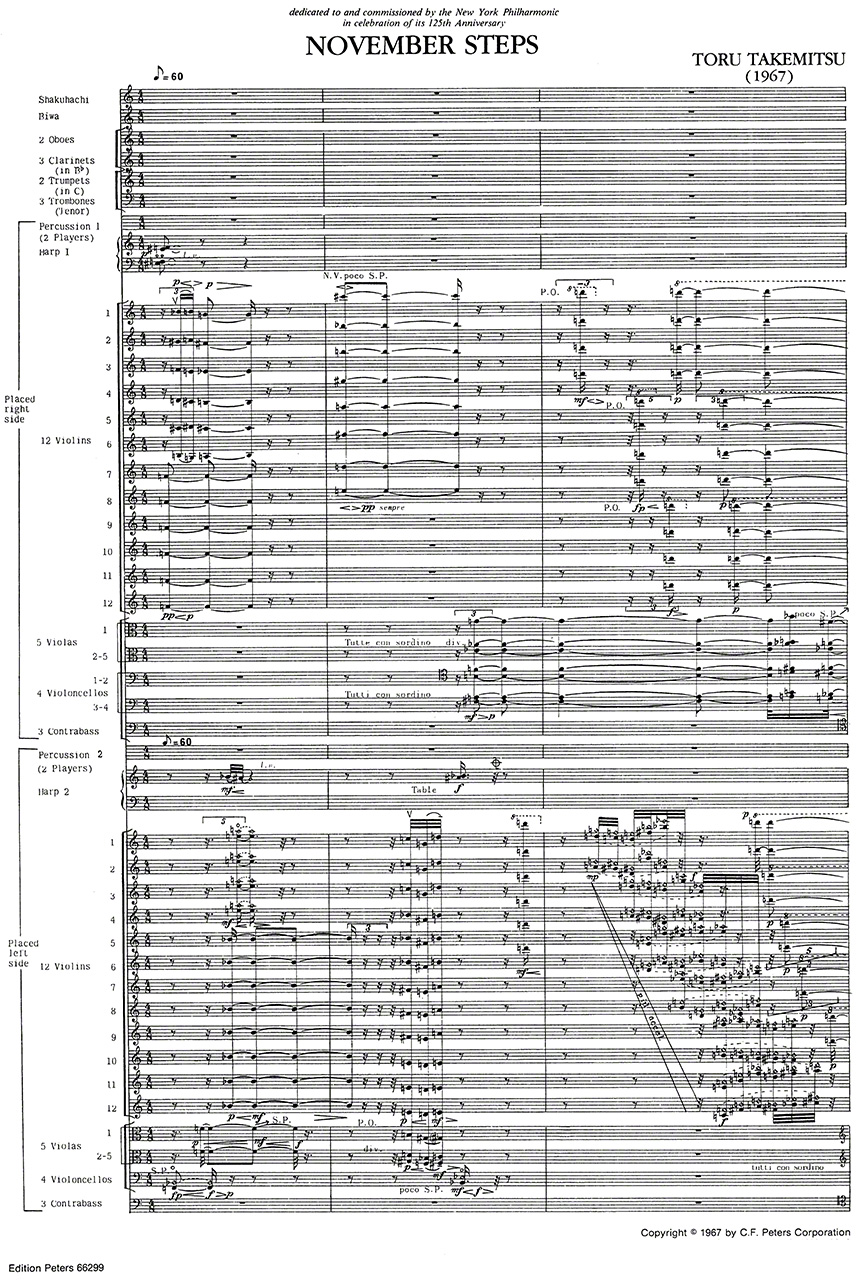
The score of November Steps. (© 1967 by C. F. Peters Corporation. Used by permission by C. F. Peters Corporation. All rights reserved.)
Early Days in the Postwar Avant-Garde
Takemitsu Tōru was born in Tokyo in 1930. He was 15 when he set his heart on a career in music. In the closing months of World War II, the young Takemitsu was mobilized to join a citizen work unit as Japan prepared its defenses against an anticipated Allied invasion. One day, he happened to hear a recording of Lucienne Boyer singing Parlez-moi d’amour. The winsome tenderness in the singer’s voice had a profound impact on Takemitsu—a glimpse of beauty and humanity amid the sound of bombs and military marches. He listened in a state of shock and resolved to make his living from music when the war was over.
After the war, Takemitsu made good on his vow. As a composer, he was mostly self-taught. The family home had been destroyed twice in air raids, and his parents could not afford to buy the aspiring composer a piano. Instead, he drew a keyboard on a piece of paper and carried it with him everywhere he went, imagining a magical stream of sound coming from its silent keys.
Since its first shocking, intoxicating exposure to Western culture in the nineteenth century, Japan had been striving for a way to express its own culture that incorporated the inherited artistic traditions of Western forms. Music was no exception. Modern Japanese music was under the heavy influence of German music, which had been studied by pioneers like Yamada Kōsaku.
But Takemitsu felt that the physicality of German music did not suit him. He studied for a time under Kiyose Yasuji and Hayasaka Fumio, who were exploring the potential for more Japanese modes of expression. But this did not suit him either. He was unpersuaded by their advocacy of a purely Japanese form of expression, and his dissent provoked heated discussions. Takemitsu had come to believe passionately that “there is no such thing as east and west in art.”
In 1950 he made his debut as a composer with Lento in Due Movimenti, a piece for solo piano, but acclaim was slow in coming. The piece may simply have been too ambitious and unfamiliar, both in its form and its textures.
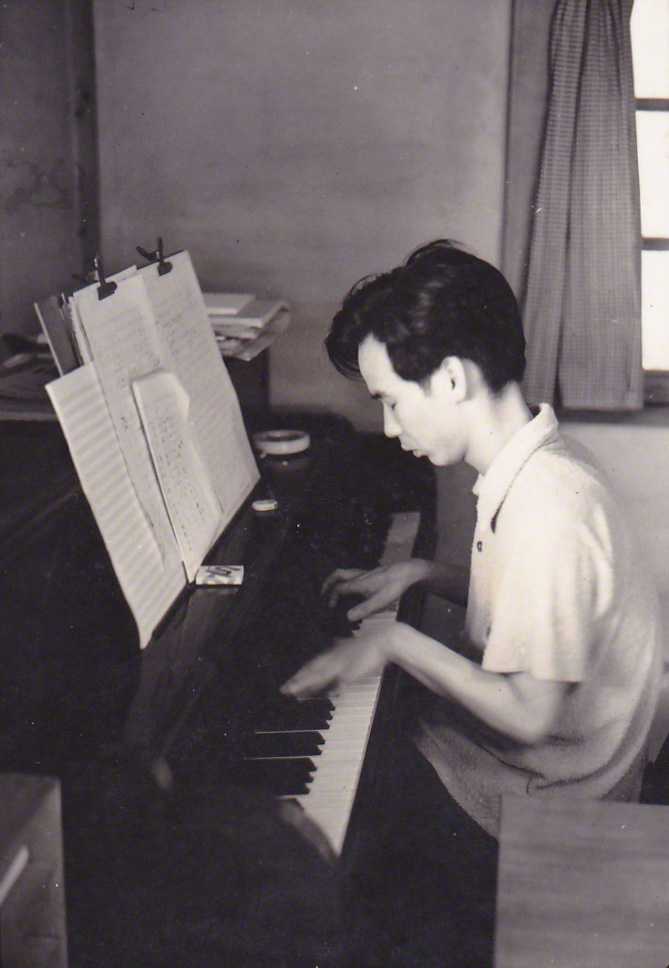
Takemitsu (pictured here in the 1950s) used the piano to help him hunt for sounds he could use in his music.
Around this time, Takemitsu was fortunate to make the acquaintance of Takiguchi Shūzō, a surrealist poet and art critic who was at the primary mentor and central figure in the Jikken Kōbō (Experimental Workshop), an avant-garde collective of young musicians, artists, and writers. The group prided itself on its experimental and contemporary spirit, and was engaged in a wide variety of ambitious projects including collaborations between art and music. On Takiguchi’s recommendation, Takemitsu published an essay in a magazine on “Paul Klee and Music,” and began to widen his interests, becoming active in other arts besides music.
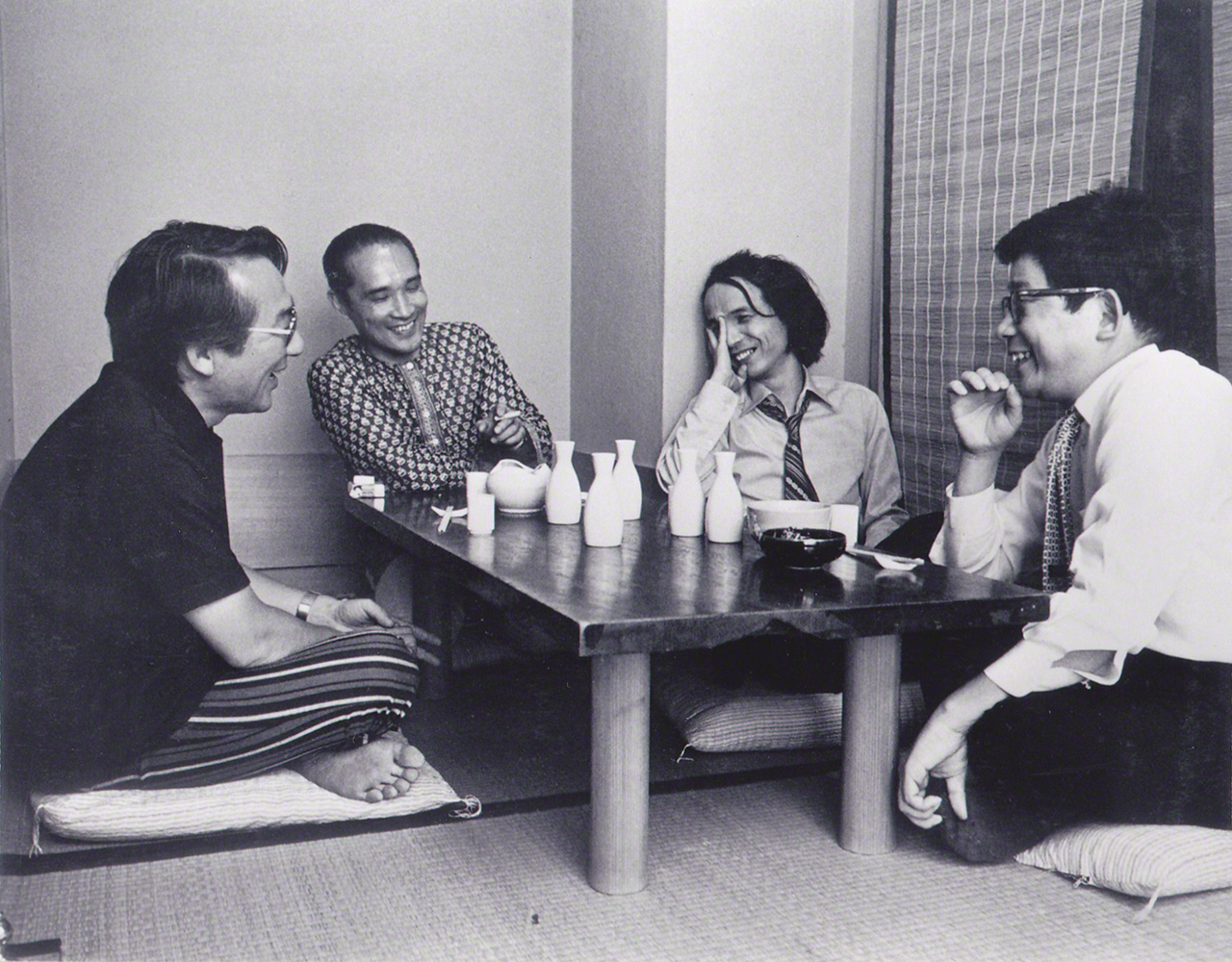
Relaxing with friends in the 1970s. From left: composer Yuasa Jōji, poet Tanikawa Shuntarō, Takemitsu, and writer Ōe Kenzaburō.
At this stage, Takemitsu was active at the forefront of Japan’s artistic avant-garde, but he had to take a step back from the front lines when he became seriously ill with tuberculosis in 1953, at the age of 23. Around this time, music critic Akiyama Kuniharu, a fellow member of the Jikken Kōbō group, approached him with a commission for a new piece for orchestra. The result was Takemitsu’s Requiem for Strings, dedicated to his one-time teacher Hayasaka, who had died—from tuberculosis—in 1955, aged just 41. In 1957, Takemitsu was 27. His big break came two years later, when effective new drugs had started to improve his medical condition. In 1959, Igor Stravinsky happened to hear Takemitsu’s requiem by accident during a visit to Japan. He was deeply impressed and singled the work out for praise in public, commenting on the “sincerity” and “strictness” of the music, and expressing astonishment that “music as passionate as this should have been created by a man of such short stature.” This unhoped-for endorsement by one of the world’s most famous composers duly worked its magic, and Takemitsu started to find doors opening in front of him.
This was a time of growing interest in Europe and America in non-Western cultures, and particularly in the Japanese traditions of Zen Buddhism. Ironically, at a time when many people in Japanese music circles still looked to Europe for inspiration and guidance, in the West itself attention was turning to places further afield, including East Asia. Indeed, one of Takemitsu’s contemporaries, Mayuzumi Toshirō, abandoned his musical studies abroad and returned to Japan, declaring dismissively that there was nothing more to learn in Europe.
Takemitsu, though, was not interested in the idea of the “East” or “West.” What he wanted to see was a dialogue between artists, regardless of their background. He believed that artists should come together to share their thoughts and emotions as contemporaries trying to make sense of the world at the same moment in history. At the time, numerous international music festivals were being held throughout Europe and America, many of them with an eye on Asia, and Takemitsu became a regular on the festival circuit, as a composer who was frequently invited to travel overseas and contribute newly commissioned pieces.
Takemitsu was lucky enough to receive a steady stream of commissions from countries around the world. When asked about the secret to this success, he answered with a laugh: “Never give up hope! The worse things get, you more hope you must have to balance it out.” His unpretentious sense of humor was no doubt one of the reasons why he was so popular with the many people he worked with around the world.
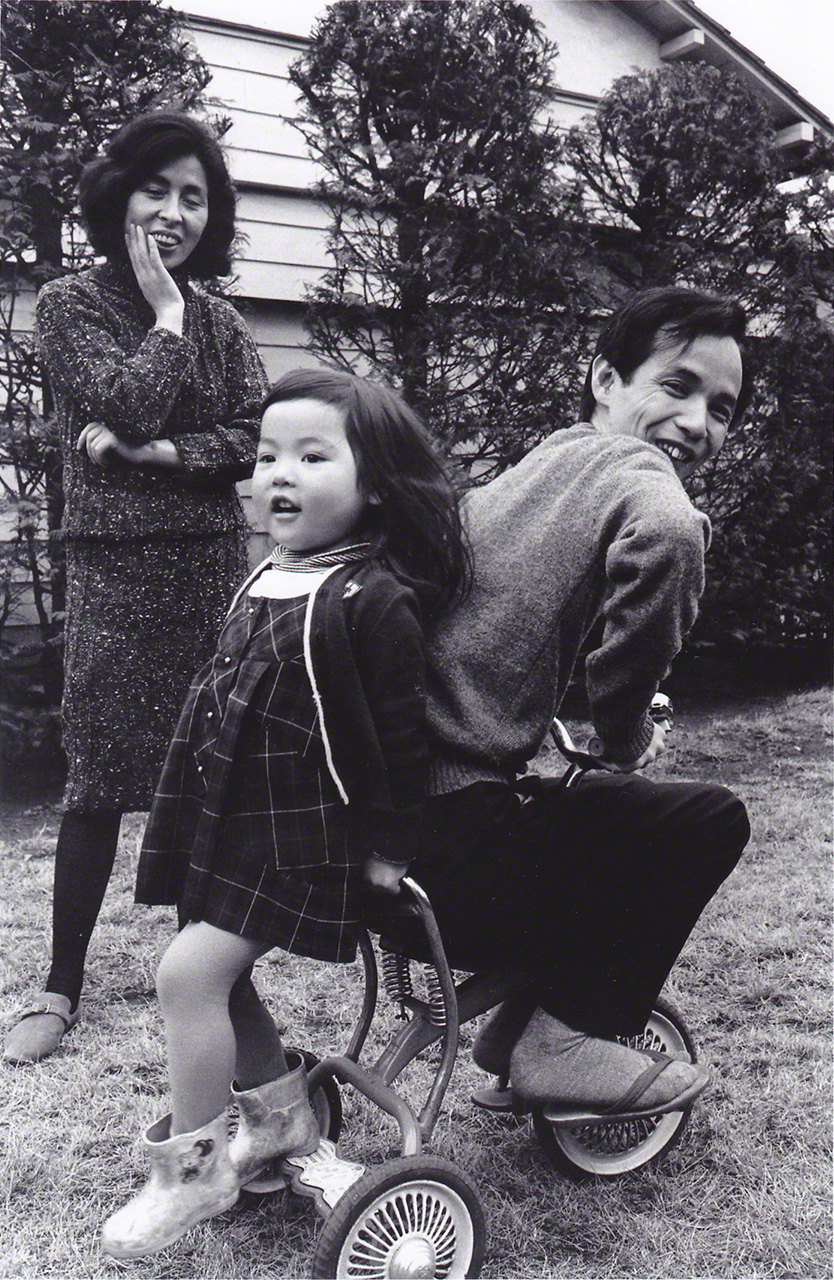
Relaxing at home with his family in 1963.
Cultural Ambassador Between Japan and the West
In 1965, Takemitsu won the Prize for Top Excellence at the prestigious International Rostrum of Composers for Textures, a piece for piano and orchestra. He was the first composer from Asia to win the award. Two years later, in 1967, came the premiere of November Steps, the piece described at the beginning of this article.
Following this, while continuing to compose mostly for Western instruments, Takemitsu shifted his style from the “strictness” remarked on by Stravinsky to one marked by lush, opulent harmonies. While continuing to base himself in Japan, he traveled frequently overseas every year. He took seriously his role as a bridge between Japan and the West and worked hard to deepen international dialogues and exchanges. In addition to writing his own music, he became a kind of cultural ambassador, organizing music festivals and inviting overseas artists to perform in Japan, while also introducing Japanese musicians at festivals overseas.
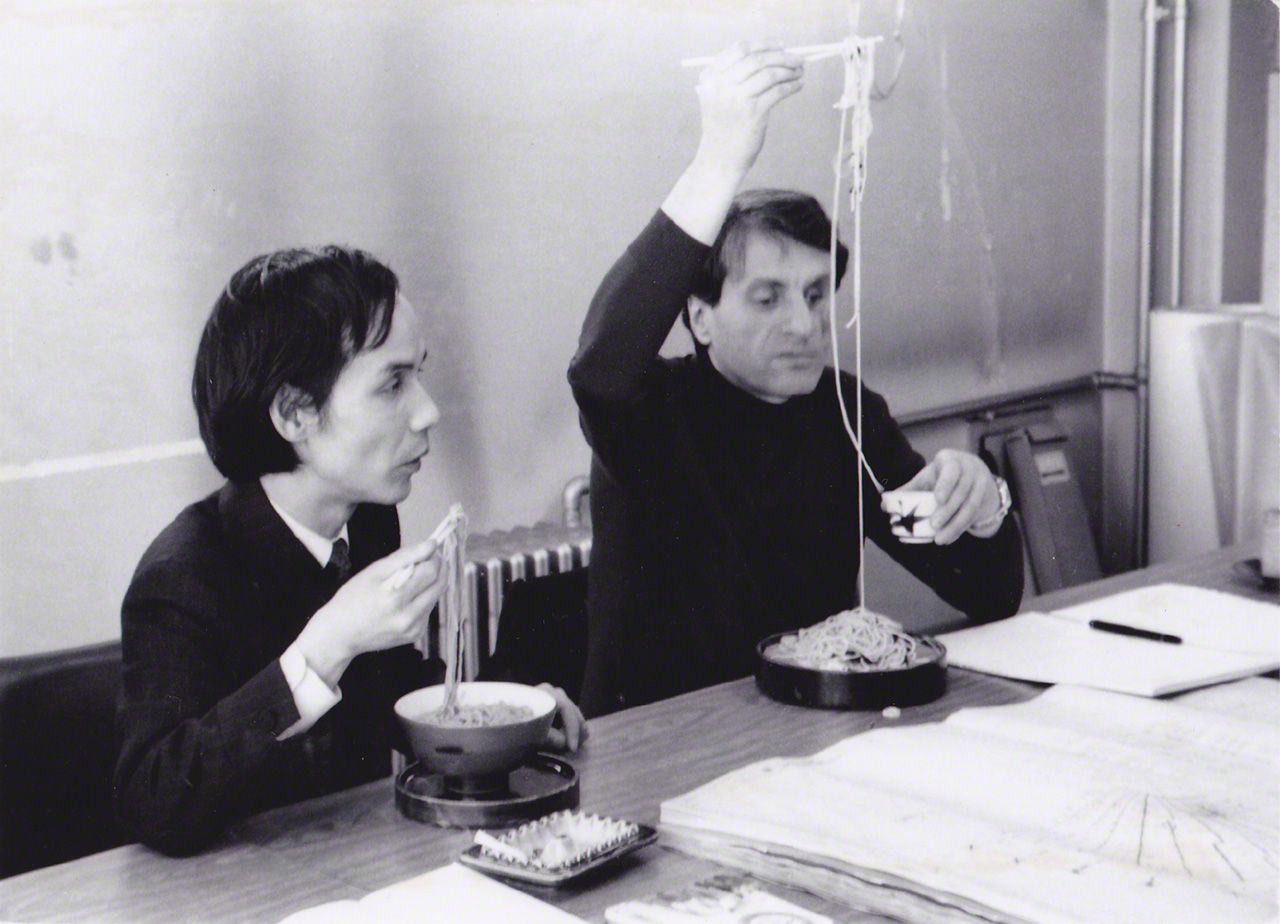
Bonding over a bowl of soba noodles with Greek-born composer Ianiis Xenakis in 1970 at the Osaka Expo, where Takemitsu was artistic director of the “Steel Pavilion.”
People sometimes claim that Takemitsu’s music is hard to understand, and there may be an element of truth to this. His titles are often poetic and allusive, and can be hard to grasp. The rhythmical divisions of his music too can often be ambiguous, and his themes tend to be repetitious and circular rather than developing in clear, straight lines. In this, the melodic structures of his Takemitsu’s works show the influence of qualities often found in the traditional Japanese arts, notably picture scrolls and landscape gardens.
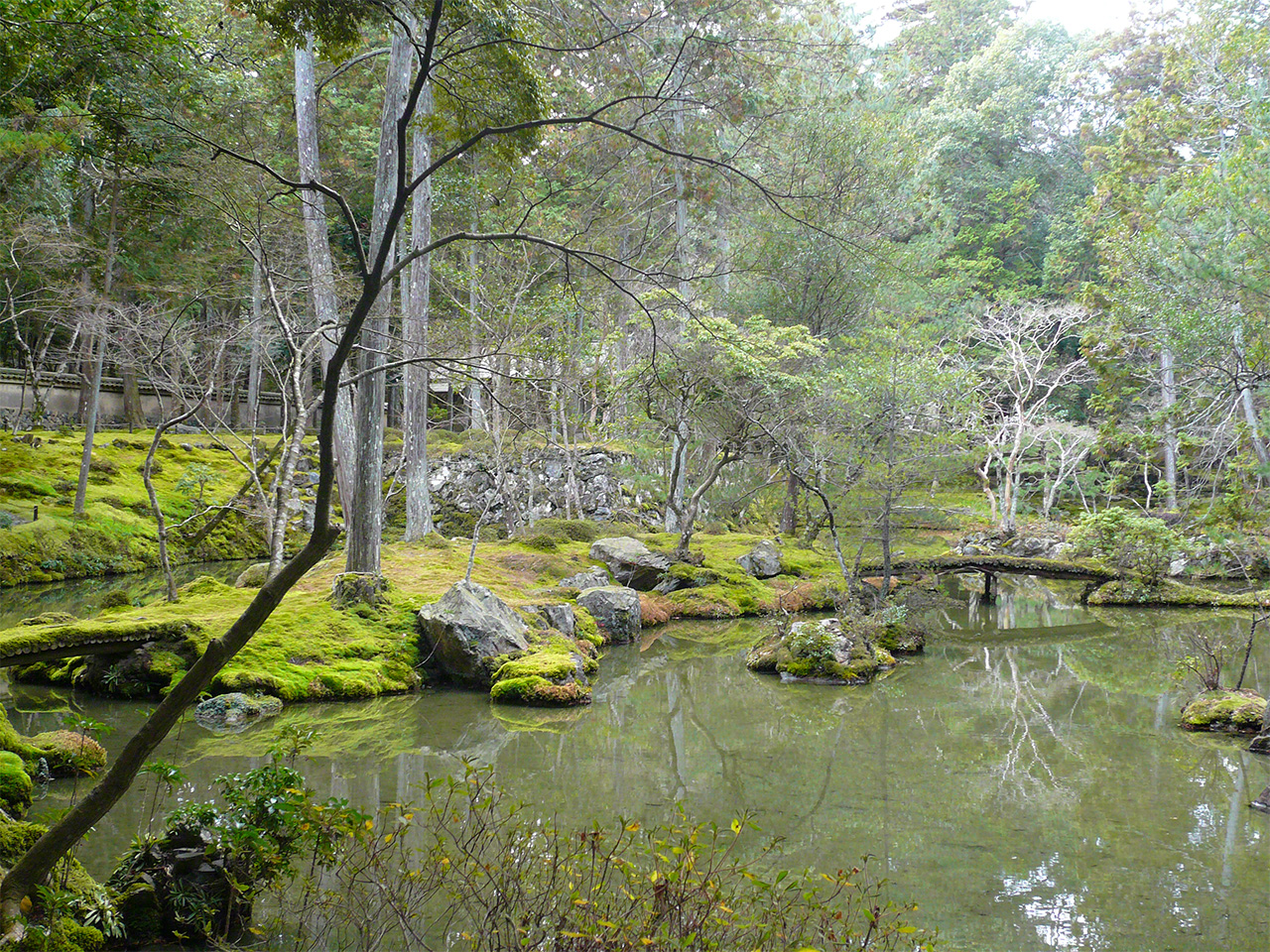
The temple garden at Saihōji, Kyoto. Takemitsu was particularly fond of this garden, and many of his compositions were inspired by the austere esthetics of Zen gardens.
Non-Japanese musicians who perform Takemitsu’s music often claim to sense something distinctly “Japanese” in it. Perhaps similarities can be found between his expressive style, with its tendency to prioritize the timbre and acoustic quality of the sounds that are the building blocks of music, and Japanese cuisine, which aims to bring out the intrinsic flavors of the ingredients. But that aside, is it possible to discern anything concretely “Japanese” in his music?
Takemitsu gave his compositions titles that seem designed to show that they were based on a view of the world that looked far beyond Japan. Rain Dreaming, for example, alludes to the “dreamings” of Australian Aboriginal cultures, while A Bird Came Down the Walk and Far Calls, Coming Far! borrow their titles from Emily Dickinson and James Joyce’s Finnegans Wake, respectively. Nostalghia alludes to the film of the same name by Andrei Tarkovsky. And these are just a few of many examples. In fact, it would be harder to find works by Takemitsu that have distinctively Japanese titles.
Much of Takemitsu’s music draws inspiration from elements of the natural world—rain and water, wind, birds—that some people claim to find particularly “Japanese.” But surely these are universal themes: All human beings and all human cultures exist alongside nature, of which they are intrinsically a part. As the musicologist Peter Burt has said, while “Japan” can be said to exist “on the level of philosophical and esthetic ideas” in Takemitsu’s music, it was something he tended to avoid on the more accessible level of melody and the other structural elements of his music.
The Sea of Tonality
Toward the end of his life, Takemitsu wrote of his ambition to “swim in the ocean that has no west or east.” The vast oceans, as the source of all life and symbol of death and rebirth, were one of the main themes of his music. With its gently flowing melodies, and lush harmonies evocative of wind, light, birds, and the natural world, his music echoed across what Takemitsu himself called the “sea of tonality.”
Although his pieces often contain angular hints of restlessness and dissonance, ultimately his music is infused with brightness and warmth, enveloping the listener in a cocoon of sound. The steady breathing of the music restores the balance between mind and body and brings the listener’s mind into harmony with nature. It is a music that affirms human life, and is strong enough to offer hope and consolation in the face of anxiety and adversity. These qualities have ensured that Takemitsu’s music continues to feature regularly on concert programs around the world alongside the classics. His music has outlived him, making him rarity among contemporary composers.
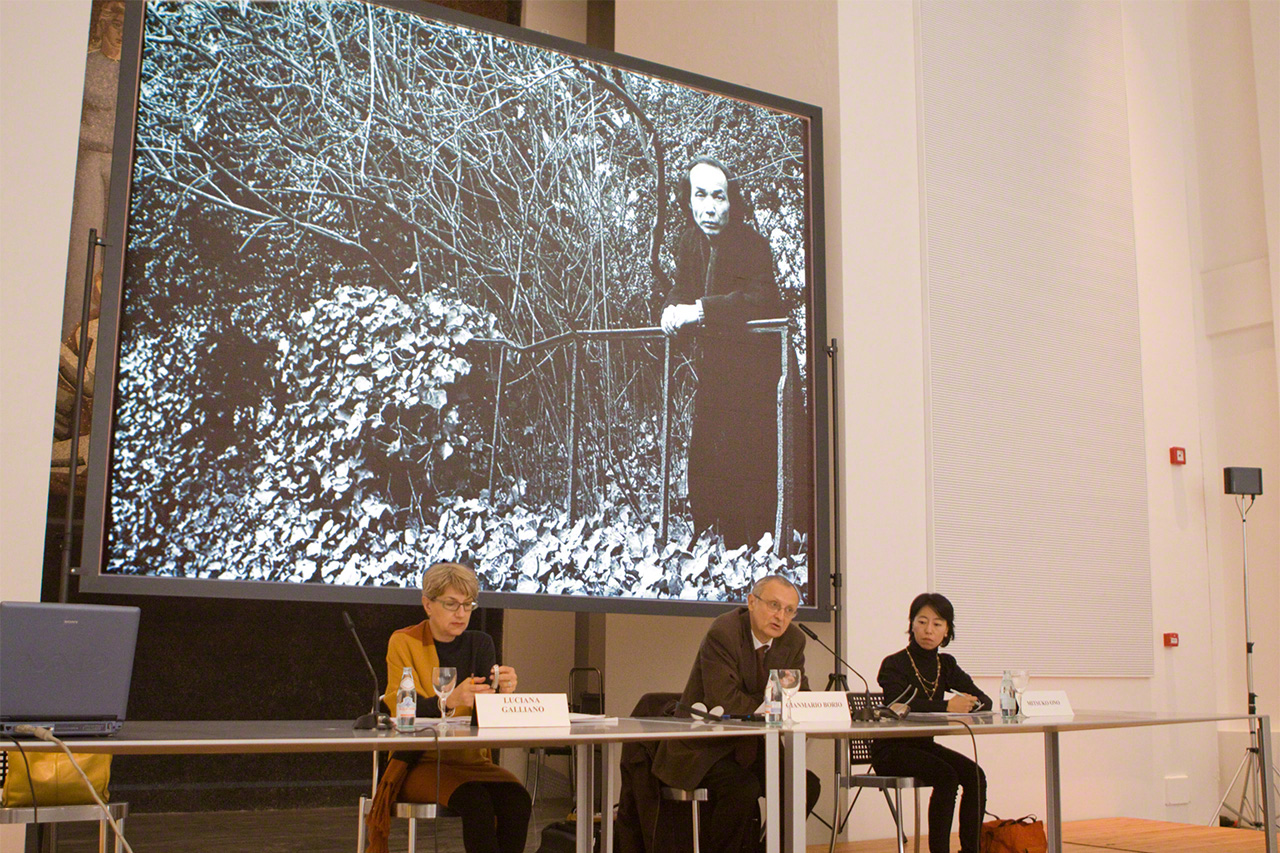
The author attends a day-long symposium on the work of Takemitsu Tōru held as part of the Milano Musica festival in Milan, Italy in 2009. (© Vico Chamla)
Another aspect of Takemitsu’s work that helps to widen its appeal is that way in which it seamlessly incorporates the many different styles of music that the composer loved. His music carries the influence of such diverse composers as Bach, Debussy, and Alban Berg, as well as jazz and popular styles, and innovations that he shared with contemporaries such as Olivier Messiaen and John Cage. Takemitsu loved the music of the Beatles and arranged several Lennon/McCartney songs for classical guitar. His music can be described as a happy encounter between classical, contemporary, and popular styles.
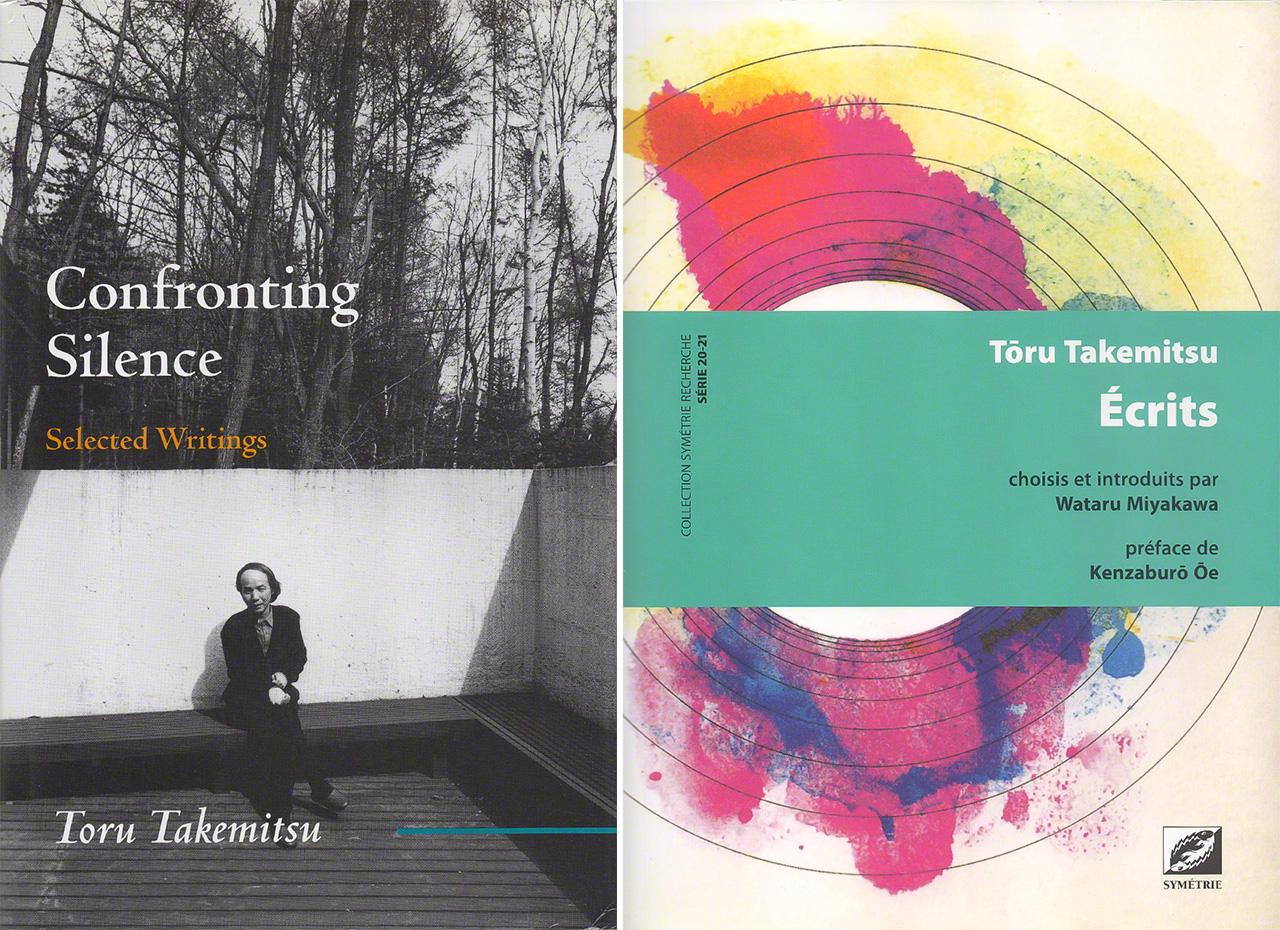
Takemitsu’s numerous writings have been published in several languages. The cover of this French edition (right) incorporates an example of the “graphic scores” that Takemitsu invented with the designer Sugiura Kōhei.
Another important strand of Takemitsu’s oeuvre is his film music, an area to which the composer dedicated himself seriously throughout his life. In all, he contributed groundbreaking and intricate scores to around 100 films, including work by such leading directors as Kobayashi Masaki (Kwaidan and Harakiri), Teshigahara Hiroshi (Woman in the Dunes, Face of Another), Shinoda Masahiro (Pale Flower, Ballad of Orin), Kurosawa Akira (Dodes’ka-den and Ran), and Philip Kaufmann (Rising Sun).
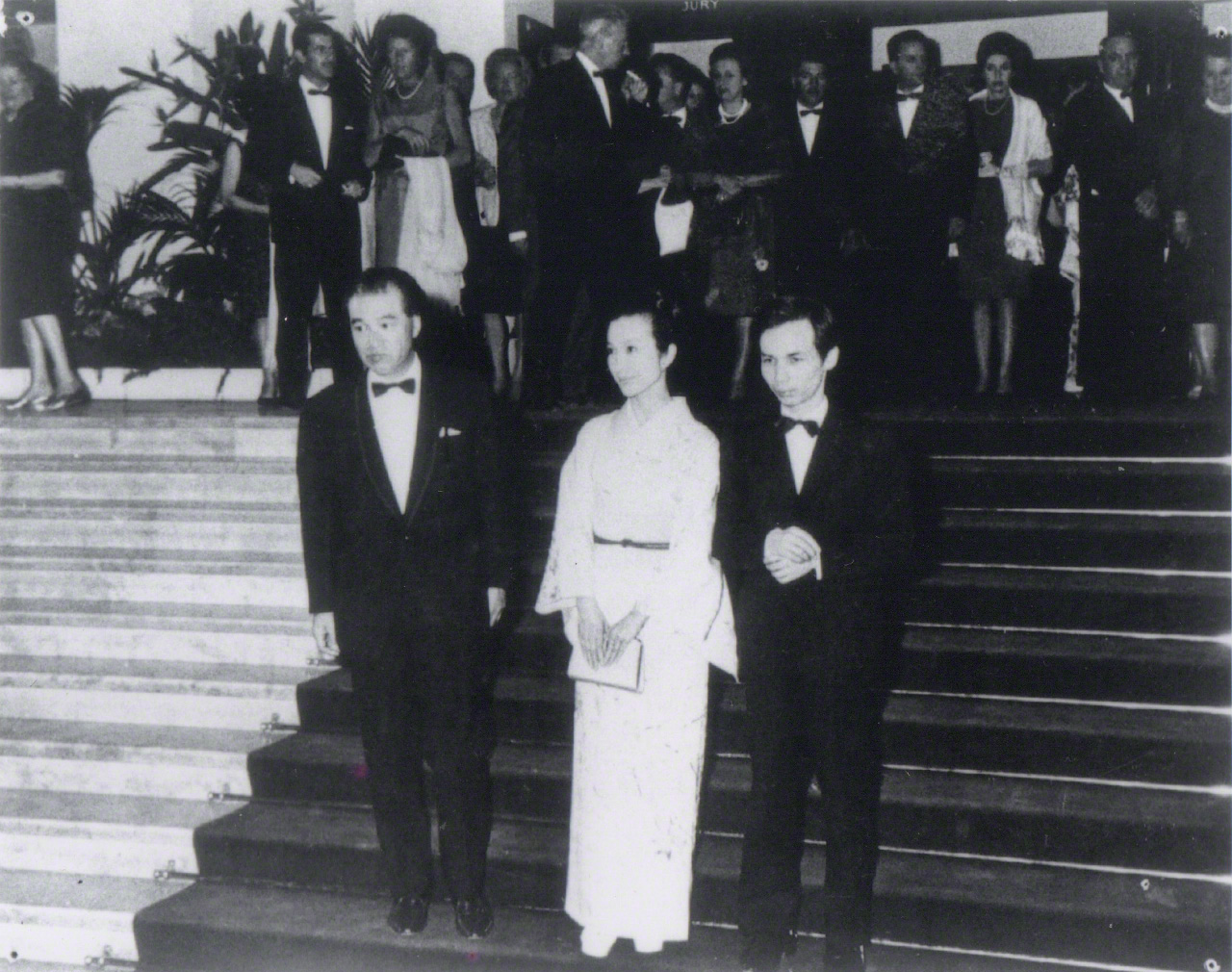
When Kwaidan won the Special Jury Prize at the Cannes International Film Festival in May 1965, Takemitsu (who wrote the music) attended the ceremony together with director Kobayashi Masaki (left) and actress Aratama Michiyo.
Takemitsu’s work has also continued to have an impact on a generation too young to have known him when he was alive. Among the artists he has inspired are the writer Asabuki Mariko and the dance troupe Noism, led by world-renowned dancer Kanamori Jō, who have published new works based on his writings and his gagaku traditional court music, respectively. A quarter of a century after his death, interest in Takemitsu and his music is as strong as ever, and his open-minded, diverse, and questing music continues to exert a growing influence not only on fellow musicians but throughout the arts.
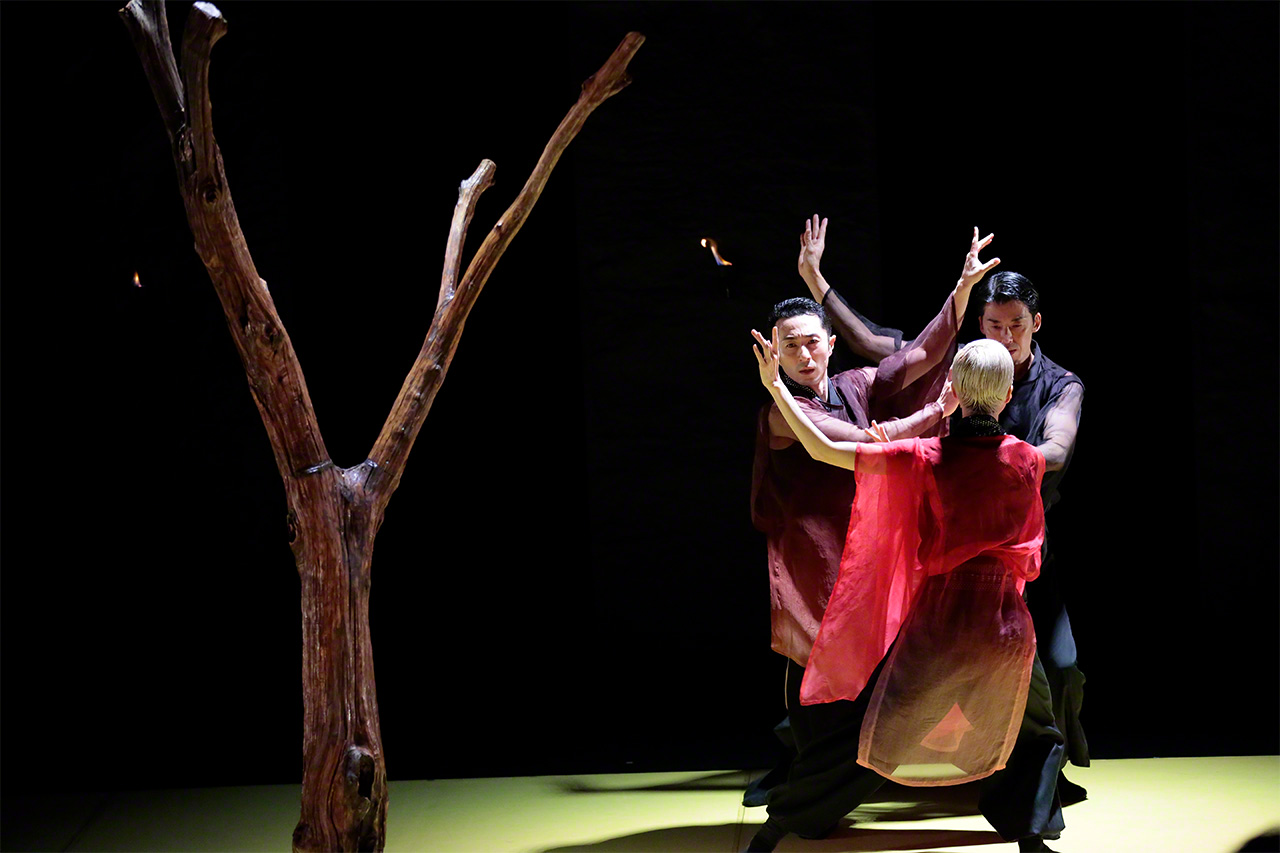
A scene from Noism’s stage production Traces Garden, inspired by Takemitsu’s piece In an Autumn Garden for gagaku orchestra. (© Kishin Shinoyama, 2021)
(Originally published in Japanese. Banner photo: Portrait of Takemitsu Tōru, taken in June 1993. © Clive Barda/Arena PAL/Aflo. All photos courtesy of Takemitsu Maki except where otherwise noted.)